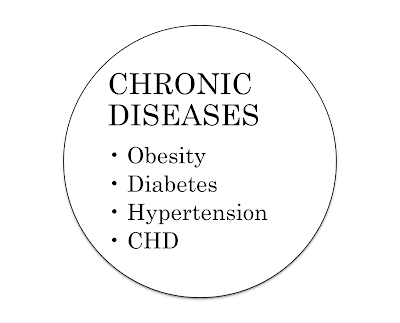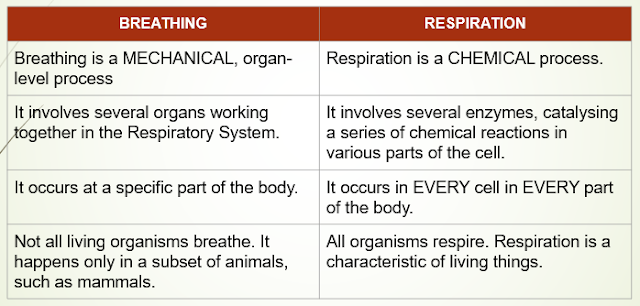CHRONIC DISEASES [CSEC BIOLOGY & CSEC HSB]
SYLLABUS REFERENCE
CSEC HSB
[D9] discuss chronic / lifestyle-related diseases;CSEC BIOLOGY
[B10.5] discuss the treatment and control of the four main groups of disease.
DEFINITION
Chronic diseases are long term medical conditions that often get worse over time.
They are non-communicable diseases. Many are also considered lifestyle-related diseases.
Lifestyle (-Related) Diseases
'Lifestyle' because certain practices & behaviours contribute to the development of the disease in an individual.
Note, however, that these practices are not the only contributing factors. Others include:
- Age
- Gender
- Inherited traits
The Challenge of Dealing with Lifestyle Diseases in a Community, from the Perspective of Public Health Professionals
OBESITY
This is a form of malnutrition.
A person is considered obese once they have accumulated so much body fat that it has a negative effect on their health.
An obese person is also at increased risk for other serious diseases, such as:
- Type II Diabetes
- Hypertension (secondary)
- Stroke
- Coronary Heart Disease (CHD)
Obesity in Children
DIABETES MELLITUS
Signs & Symptoms
These apply to both Type I and Type II
- Higher than normal blood glucose level
- Excessive thirst & extreme hunger
- Frequent urination
- Glucose in the urine
- Unexplained weight loss
- Fatigue
- Blurred vision
- Slow-healing wounds
Treatment & Prevention
The following applies to both Types
- A healthy diet
- Low in sugar & saturated fats
- High in dietary fibre
- Regular exercise
- Regular medical checkups
Type I in Particular
- Treatment via regular insulin injections or an insulin pump
- Regular monitoring of blood glucose levels
Type II in Particular
- Oral medication to help lower blood glucose levels
- Weight management
CARDIOVASCULAR DISEASE (CVD)
A group of conditions that affects the heart & blood vessels.
It includes hypertension and coronary heart disease (CHD).
Hypertension
Coronary Heart Disease (CHD)
This is a condition caused by the build-up of fatty material - aka plaque - inside coronary arteries.
The plaque reduces the internal diameter of the coronary arteries and causes the blood pressure in the arteries to increase. A blood clot may then form in one of the narrow arteries, blocking it. This can then lead to a myocardial infarction (heart attack).
Coronary arteries:
Arteries that supply oxygenated blood to the heart muscle cells.
Atherosclerosis:
The process by which plaque is deposited in the lining of the arteries.
Treatment & Prevention of CVDs
The following applies to both hypertension & coronary heart disease
- Weight management
- A healthy diet
- Low in saturated fats
- Low in salt
- Regular exercise
- Stopping smoking
Hypertension in Particular
- Prescription drugs to lower blood pressure
- Stress management
- Reduced alcohol consumption
Coronary Heart Disease in Particular
- Coronary artery bypass surgery (aka heart bypass surgery)
- A daily low-dose aspirin to prevent blood clot formation (ages 40 - 59, age 60+ should avoid) hyperlink to article outlining the research.
IMPORTANCE OF DIET & EXERCISE TO MANAGING OR PREVENTING LIFESTYLE DISEASES
A healthy, balanced diet:
- ensures that excess carbohydrates & fats are not consumed
- limits weight gain
- helps with the maintenance of normal heart rate & blood pressure.
Regular aerobic exercise:
- Limits weight gain
- Promotes more efficient gaseous exchange & faster metabolic rate
- Promotes increase in muscle size & strength
- Improves mental health, as it helps reduce depression & anxiety, and boosts self esteem.













